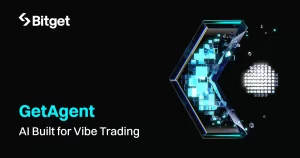AI Crypto Coins and Trading Bots to Watch: A Practical Guide for Risk-Tolerant Investors

Artificial intelligence has moved from an experimental lab curiosity to a tool that reshapes how people create, trade and monetize digital goods. When AI meets cryptocurrency, the result can feel like a new toolbox for builders and traders — tokens that power AI services, marketplaces that trade machine intelligence, and trading bots that learn from market behavior. These are speculative investments. They attract risk seekers and builders who want utility, not just hype.
- What is “AI crypto”?
- Why investors watch AI coins and trading bots
- AI crypto projects to know
- Bittensor (TAO)
- NEAR Protocol (NEAR)
- Render (RENDER)
- Fetch.ai (often referenced as FET / Artificial Superintelligence Alliance)
- AI crypto platforms with trading bots
- Cryptohopper
- 3Commas
- Pionex
- Bitsgap
- How to evaluate AI crypto projects and trading bots — a practical checklist
- For AI crypto tokens
- For AI trading bots and platforms
- Portfolio ideas and risk management
- Suggested allocation framework (example)
- Dollar-cost averaging and position scaling
- Bot deployment approach
- Diversification within the AI sleeve
- Exit rules and stop-loss discipline
- Common pitfalls and red flags
- Practical checklist before allocating capital
- Final thoughts
- Quick reference tables
This article explains eight prominent AI crypto coins and trading-bot platforms, how they work, why people care, and practical ways a cautious but curious investor might think about them.
What is “AI crypto”?
AI crypto refers to two overlapping categories:
- Tokens that power, govern or pay for AI-driven platforms — marketplaces for models, compute-sharing networks, or decentralized agents.
- Platforms and services that use machine learning to trade cryptocurrency — “AI trading bots” that automate strategies, adapt to market conditions and can be offered as SaaS.
Think of AI crypto like the tools and fuel for a digital factory. Tokens act as fuel and access passes. Bots and platforms are the machinery that turn raw inputs (market data, compute power) into outputs (images, model inference, trades).
Why investors watch AI coins and trading bots
A few reasons explain the interest:
- Utility: Where tokens have real use (paying for GPU time, renting models), adoption can translate to demand.
- Network effects: Marketplaces that attract model creators, GPU providers and buyers can build self-reinforcing growth.
- Speculation: The AI narrative has wide appeal. That story can drive capital flows and price moves.
- Leverage: Bots promise to scale a trader’s approach across markets 24/7, replacing manual monitoring.
But utility doesn’t guarantee price. Many AI crypto projects sit in an experimental phase. Trading bots can help execute strategies more efficiently but don’t guarantee profits. Always treat these as high-risk, experimental allocations.
AI crypto projects to know
Below are four tokens that have emerged as prominent AI-focused crypto projects. Each one targets a different niche — marketplaces, layer-one blockchains for agents, GPU compute sharing and decentralized machine-learning infrastructure.
Bittensor (TAO)
What it does
Bittensor builds a decentralized marketplace for machine intelligence. Developers can contribute models and compute resources. Buyers can access these models by interacting with the network.
Why it matters
TAO acts as the native token for rewards and participation. If a marketplace genuinely enables third parties to buy and sell useful AI services, it creates an economy around machine intelligence — the same way app stores created economies for mobile software.
Key risks
- Model quality and demand are uncertain.
- Centralization pressures if a few actors control the most valuable models.
- Tokenomics can drive speculative moves separate from utility.
NEAR Protocol (NEAR)
What it does
NEAR is a layer-one blockchain that emphasizes speed, low fees and developer-friendliness. It positions itself as a platform for AI agents and dApps that need efficient execution and data handling.
Why it matters
NEAR hosts decentralized apps that integrate AI agents. If developers build AI services here at scale, NEAR’s token attracts usage — paying for transactions, storage and staking to secure the network.
Key risks
- Competition from other layer-one chains (Ethereum, Solana, others).
- Adoption hinges on developers and real use cases, not just marketing.
Render (RENDER)
What it does
Render connects artists and developers who need GPU rendering power with GPU owners willing to rent compute. That compute becomes especially valuable to creators producing AI-generated content and model training.
Why it matters
AI model training and creative rendering require large GPU clusters. Render creates a marketplace so demand can meet available supply. RENDER functions as the payment token.
Key risks
- Long-term demand depends on how creators monetize AI content.
- Centralized competitors or cloud giants could offer competitive pricing.
Fetch.ai (often referenced as FET / Artificial Superintelligence Alliance)
What it does
Fetch.ai offers a decentralized platform for machine-learning agents that can perform tasks like supply-chain optimization, asset trading and energy-grid coordination. FET is its utility token.
Why it matters
The project blends AI agents with blockchain coordination. Where decentralized agents can automate useful tasks across industries, a tokenized economy could coordinate incentives and reward performance.
Key risks
- The “agent” concept is compelling, but production-grade deployments remain limited compared to the vision.
- Competition from centralized AI services and protocol-level challengers.
AI crypto platforms with trading bots
Trading bots and platforms that incorporate AI seek to automate execution, backtesting and strategy optimization. Here are four platforms frequently cited.
Cryptohopper
What it does
Cryptohopper connects to many exchanges (including Binance and Coinbase) and provides a suite of bots that perform automatic trading, social/copy trading and trailing orders. It offers a free tier with limited positions and premium tiers for active traders.
Why traders use it
- Easy to set up and beginner-friendly.
- Machine learning elements allow bots to adapt to strategies they learn from.
- Backtesting and marketplace of strategies enable iterative improvement.
Key cautions
- Backtests look pretty on paper but may not survive real-time slippage, fees and liquidity.
- Social copying can magnify losses if followers don’t understand the original trader’s risk profile.
3Commas
What it does
3Commas emphasizes a simple interface with robust features: DCA (dollar-cost averaging) bots, grid bots, and an advanced SmartTrade terminal. It integrates with over 20 major exchanges and offers tiered plans.
Why traders use it
- SmartTrade lets traders deploy complex orders across exchanges and track performance.
- The platform balances beginner-friendly tools with features for pros.
Key cautions
- Bots require calibration. A simple grid or DCA bot can perform poorly in trending markets without adjustments.
- Pricing varies; higher tiers unlock more bots and integrations.
Pionex
What it does
Pionex is an exchange with built-in automated bots that run in the cloud 24/7. It offers free and paid bots, and it markets itself as a low-fee, automated trading hub with AI features like predictive analytics.
Why traders use it
- Built-in bots remove the need for external API connections and cloud setups.
- Low trading fees (0.05% maker and taker) make frequent bot trading more economical.
Key cautions
- You trade on the exchange’s infrastructure, so exchange downtime or custody risks matter.
- Bots that are “plug-and-play” still need monitoring and parameter tuning.
Bitsgap
What it does
Bitsgap offers automated bots (DCA and COMBO for futures) and a Smart Trade terminal with advanced order types. It connects to more than 25 exchanges and provides AI-powered strategy optimization.
Why traders use it
- Wide exchange coverage and an ambitious feature set.
- Advanced order types help traders execute nuanced strategies across liquidity pools.
Key cautions
- Subscription plans vary; higher-level features require higher fees.
- Bots’ performance depends heavily on market conditions and configuration.
How to evaluate AI crypto projects and trading bots — a practical checklist
Treat evaluation like inspecting a used car: check the engine, the mileage, service records and whether the seller owns the title.
For AI crypto tokens
1. Utility and clear use case
Does the token have a measurable utility? Tokens that merely exist as brand wrappers without required network use struggle long-term. Look for genuine payments for compute, storage, model access, or governance tied to measurable activity.
2. Adoption and developer activity
Check GitHub, developer forums, and dApp activity. Active contributors and visible projects using the protocol suggest traction. A whitepaper alone doesn’t equal adoption.
3. Tokenomics and supply dynamics
Understand issuance schedule, inflation, staking rewards and vesting for founders. Tokens with heavy early allocations to insiders can experience dumps when vesting ends.
4. Decentralization and governance
Who runs the network? Centralized control creates single points of failure that undercut the “decentralized” promise and may hurt credibility.
5. Partnerships and integrations
Real partnerships — not just aspirational press releases — indicate a project is reaching for utility. Look for production deployments and paying customers.
6. Regulation risk
Platforms that touch financial services or AI-powered trading may attract regulatory attention. Consider jurisdiction, compliance posture and whether the token could be treated as a security.
For AI trading bots and platforms
1. Track record and transparency
Does the platform publish verifiable performance data? Beware of cherry-picked backtests presented without realistic fees or slippage.
2. Exchange integrations and custody model
Which exchanges can the bot access, and who holds custody of funds? API-key trading retains custody with exchanges, while some services custody funds themselves — that increases counterparty risk.
3. Risk controls and safeguards
Can you set stop-losses, max-drawdown limits and position sizing? A bot without robust risk controls is a hammer that will hit your fingers eventually.
4. Customization and monitoring
Does the platform let users tune strategies and monitor live performance? “Black-box” bots that don’t show logic or parameters are riskier for most retail users.
5. Costs and fee structure
Bots with high subscription fees must outperform enough to justify cost. Factor in trading fees, funding costs and tax implications of frequent trading.
6. Community and support
An active community and responsive support reduce friction when things go wrong. Check forums, Telegram/Discord and customer-service reviews.
Portfolio ideas and risk management
If someone wants exposure to AI crypto, treat it as a high-risk sleeve of a portfolio. Use the “3% rule”: allocate a small portion of investable assets (for many, 1–3%) to speculative bets. Scale position size by time horizon and risk tolerance.
Suggested allocation framework (example)
- 60–80% core portfolio: diversified ETFs, bonds or blue-chip stocks.
- 10–30% growth/crypto: larger, established assets like Bitcoin or Ethereum.
- 1–5% experimental: AI tokens, smaller-cap crypto, or advanced trading bots.
Dollar-cost averaging and position scaling
Rather than investing a lump sum into an AI token or bot-based strategy, use dollar-cost averaging to buy incrementally. Think of it like dipping toes into a cold lake rather than diving in blind.
Bot deployment approach
Start bots on small amounts, monitor performance for several market cycles, then scale. Run bots in paper-trading mode if available. Treat early results as learning, not proof.
Diversification within the AI sleeve
Diversify across different types of exposure:
- Infrastructure tokens (e.g., compute marketplaces)
- Layer-one blockchains hosting AI dApps
- Bot platforms (service exposure rather than token exposure)
Exit rules and stop-loss discipline
Set objective exit rules before deploying capital. Use position size, drawdown triggers and time-based reviews to decide when to reduce exposure.
Common pitfalls and red flags
Hype-driven narratives
Investors often conflate a snappy AI tagline with product-market fit. Real adoption comes from users paying repeatedly for services, not from press releases.
Over-optimized backtests
Backtests that show perfect returns often overfit historical data. Make sure performance metrics include realistic fees, slippage and downmarket performance.
Centralized control or hidden custodianship
A project that claims decentralization but relies on a single custodian or centralized dev team concentrates risk and regulatory exposure.
Token-holder concentration
High concentration among founders or early investors can cause severe price shocks when those parties sell.
Insufficient risk controls on bots
Bots without proper stop-loss logic, position-sizing limits or pause mechanisms can magnify market losses quickly.
Regulatory and legal uncertainty
AI and crypto cross into multiple regulated domains — securities, commodities, consumer protection and data privacy. Projects with unclear compliance posture may face enforcement that affects token value.
Practical checklist before allocating capital
- Do you understand what service the token or platform provides?
- Can you reproduce a strategy in paper-trade mode or small live size?
- Are the token’s issuance and vesting schedules publicly verifiable?
- Do you have a clear exit plan and loss limit?
- Can you afford to lose the allocated capital?
If the answer to any of these is “no,” pause and research more.
Final thoughts
AI crypto brings an attractive mix of technological promise and speculative risk. Tokens like Bittensor, NEAR, Render and Fetch.ai illustrate different ways AI ties to crypto: marketplaces for models, blockchains for agents, GPU-sharing networks and decentralized machine-learning platforms. AI trading bots — Cryptohopper, 3Commas, Pionex and Bitsgap — offer automation that can save time and execute strategies precisely, but they require calibration, risk controls and skepticism about backtests.
Treat AI crypto like early-stage venture exposure. Expect higher volatility, frequent pivots, and the possibility of total loss. Use disciplined position sizing, test bots in small live conditions or paper mode, and insist on projects showing measurable adoption and transparent tokenomics.
If one thinks about AI crypto like an experimental workshop rather than guaranteed gold, then the potential to discover practical, high-return tools becomes real — but so does the need for careful, deliberate participation.
Quick reference tables
Table 1 — AI crypto coins overview
| Token / Project | Primary function | Market role | Main use cases |
|---|---|---|---|
| Bittensor (TAO) | Decentralized marketplace for models | Token for contributions/rewards | Buying/selling AI models, computational resources |
| NEAR Protocol (NEAR) | Layer-one blockchain | Gas, staking, transaction fees | Hosting AI agents and dApps, low-fee smart contracts |
| Render (RENDER) | GPU compute marketplace | Payment token for rentals | Rendering, AI model training, high-bandwidth dApps |
| Fetch.ai (FET) | Decentralized ML agents | Utility token for agents’ economy | Asset trading agents, gig economy tasks, energy optimization |
Table 2 — AI trading bot platforms overview
| Platform | Key features | Integrations | Cost notes |
|---|---|---|---|
| Cryptohopper | Social trading, trailing orders, ML-based bots | 16+ exchanges (Binance, Coinbase) | Free tier; premium up to ~$107.50/mo |
| 3Commas | DCA, grid bots, SmartTrade terminal | 20+ major exchanges | Pro ~$49/mo; Expert ~$79/mo |
| Pionex | Built-in exchange bots, low fee | Native exchange (built-in bots) | 0.05% maker/taker; bots often free |
| Bitsgap | DCA, COMBO futures bots, Smart Trade | 25+ exchanges | Plans from ~$24/mo to ~$122/mo |
References and further reading
- Official project sites and developer repositories for each token and platform
- Independent performance audits and community discussions (forums, GitHub, Twitter/X)




